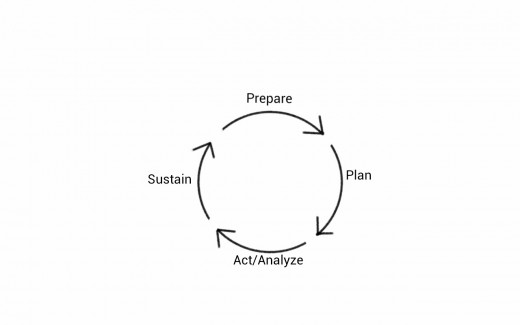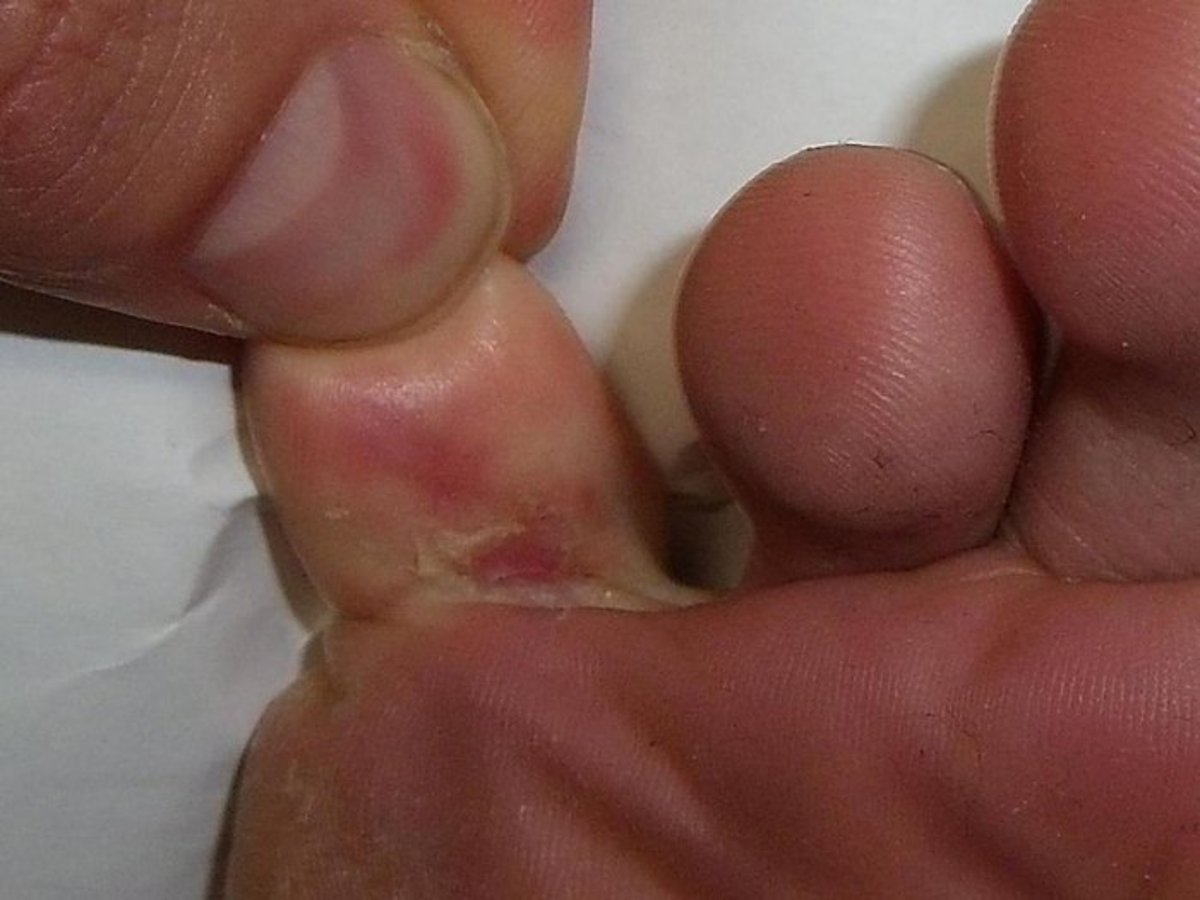Practical Steps for Changing Habits


Introduction
Most of us have habits we would like to change. Often times these habits are related to our physical health: not exercising, forgetting to floss, smoking tobacco, eating too much or watching too much television are common examples of habits people have told me they wish they could change. Other habits might be related to our finances or our emotional health. Yet most of the time changing habits is so hard that people feel powerless. I have talked to many people who have tried to make a change from time to time and failed and given up. They end up accepting their habits because it seems impossible to do otherwise.
Changing habits is hard, but it isn’t impossible. I’d like to use this article to guide you through some pre-change exercises that can help you evaluate where you are with a particular habit and make a plan for changing it if that’s what you’d like to do. This process can work for both “stop” habit changes (something you would like to NOT do) and “start” habit changes (something you would like to do).


Preparation
The first step is identifying a habit you want to change. I strongly suggest sticking with one thing at a time. Change is not something we as humans generally enjoy and it requires effort, so making one change and then building some momentum with it before tackling another change is more likely to garner success. For the sake of example, however, I am going to use two habits. The first is the “stop” change of watching too much TV in the evenings after work. The second is the “start” change of exercising in the evenings. In reality, I might not try to make both changes at once, but I would like to demonstrate how the process works for both types of habit changes.
Next, ask yourself why you want to change this habit. Spend some time with this step and really try to generate a substantial list of reasons, because this is your motivation list. These are the reasons you are subjecting yourself to the discomfort of making a change. My reasons for wanting to watch less TV in the evenings are as follows: I end up staying up too late at night and am sleepy the next day. I don’t spend time talking with my husband. I don’t get as much exercise. I don’t spend time on household chores like folding laundry or washing dishes. I usually start snacking in front of the TV and eat too much. My reasons for exercising in the evenings are these: I would like to lose weight and look good for a family vacation this fall. I want to set a good example for my daughter. I think my energy levels during the day will improve.
After that, ask yourself why you are doing things the way you are doing them now? What benefit are you getting out of it? This is a really important step, because people tend to do things that work for them on some level. If you are doing something (or not doing something) over and over it is likely meeting some need or avoiding some problem you perceive in your life. If you don’t identify what those needs are and think of other ways to meet them you are likely to return to your old habit pretty quickly. If you are stuck and can’t think of what your habit is doing for you, try changing it for just one day. When you start to feel the pull and temptation to fall into your old pattern then make note of what you were doing, thinking and feeling when that desire arose. That might give you some clues. I can think of two major things I get out of watching TV in the evenings: It offers an escape from stress; I can watch something and not think and get involved in someone else’s life. It gives me time to sit still and knit, which I both enjoy and also feels generously productive since I make gifts for other people. I can think also think of two big reasons I’m not exercising in the evenings: I feel tired and don’t want to make the effort. I would like to spend my limited evening time on other things.
Once you have thought about what your habit is doing for you, think of other ways to take care of that need. If possible, think of several different ways to meet each need or overcome each obstacle, since one solution might not work or might not always work. So if one of my needs in the evening is to escape from stress I can think of several other ways to do that: take a walk (which also meets my exercise goal!), sit and meditate, read a book, talk to my husband about my day, sit on the front porch, listen to music, color with my daughter, or call a friend. That’s eight different options; on a given day one of them is likely to work for me. I can think of some different ways to get my knitting time in as well. I could knit during phone calls, while talking to my husband, or earlier in the day by taking a lunch break. However that’s not quite as many options and I can anticipate having more trouble with missing that aspect of my TV watching.
My first obstacle to evening exercise is feeling tired – perhaps I could solve that by doing an easier form of exercise for a while, such as walking slowly on my treadmill or lifting some very light hand weights. Or I could set lower goals – just do something for 10 minutes instead of aiming for 30 and then deciding at the 10 minute mark if I wanted to continue or stop. I could also remind myself that if I keep exercising I will have more energy, so it will get easier as I go along. Hope is very important! My second obstacle is wanting to use my time for other things. Some possible solutions: I could multitask: I could read, talk on the phone, chat with my husband or maybe even knit while walking slowly on the treadmill. I could integrate exercise into other activities by taking my daughter outside to play tag instead of coloring with her or by stopping for a few jumping jacks in between putting dishes in the dishwasher. I could make exercise more fun than another activity; I’d probably enjoy a dance video more than the treadmill. I could reward myself for exercising by placing a dollar in a jar each time I did it for a great new bathing suit.

Plan, Act/Analyze and Sustain
After you have thoroughly considered your motivation and your obstacles it is time to actually make a plan to change. Writing it down and placing it where you can see it is a good way to remind yourself of the changes you are trying to make. So I might write down “I will exercise for 15 minutes each evening and limit my TV watching to 45 minutes.” I would then tape this to the bottom of the TV and maybe also to the TV remote. I might also place it on the front of the treadmill and on a kitchen cabinet where I will see it in the evenings. Another person’s plan might look different and that’s great. The plan should be specific to you. Are you the kind of person who will watch show after show once you get started on TV? Then maybe your plan should say “no TV” and you might help yourself out by covering the TV with a blanket or even taking it out of the room. Are you the kind of person who likes a lot of detail in your plans? Then you might write down “I will walk for 10 minutes and then follow a 20 minute yoga video by Shiva Rea every evening at 8:00 pm.”
Next of course is actually making the change. Act! Pick a date to start and try out your plan! I like to let my family know what I am doing and get their support, but other people prefer to quietly make changes without fanfare. Whatever suits your style, the important thing is to actually get started doing something. Recognize that even though you chose a start date, the process of making the change can last months or longer. I encourage you to approach this effort with an attitude of curiosity and compassion for yourself. There’s a pretty good chance that for all your preparation you will hit a snag and find yourself succumbing to your old habits. When that happens, use it as an opportunity to further inquire about what is driving your habits and then develop further refinements to your plan. Analyze what happened. What other obstacles or needs have you now recognized? How can you address them? Perhaps you really are too tired even for a 10 minute slow walk on the treadmill in the evenings; maybe you will choose to go to bed earlier or do some exercising during your lunch time instead of the evenings. Perhaps you realize your spouse is the one turning on the TV in the evenings and you want to work out a compromise with him about the amount of TV you both watch.
Sustaining a change often becomes easier over time, but it requires steady practice and persistence. When you get off track sustaining means getting back on again. Be kind and considerate to yourself, speaking with gentleness and warmth as you would to a loved and trusted friend. You are much more likely to keep trying with a friendly, positive coach (that’s you!) who encourages you to learn from mistakes then from an abusive coach who screams at you that you are hopeless and stupid when things don’t go well (I hope that’s not you, but too often that’s how we treat ourselves!) When you feel yourself getting frustrated and wanting progress “right now” take a step back and a deep breath. Remind yourself that habits are often years in the making and so of course it takes time to change them. Give yourself plenty of praise for making the effort to improve your well-being and teach yourself to take pleasure in the cycle of trying and learning and trying some more.








